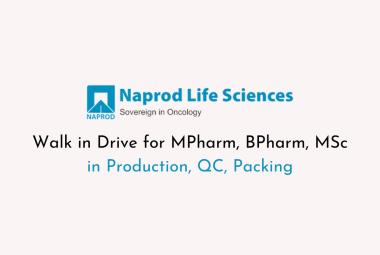 About Authors:
About Authors:
Deepjyoti Kumari
M.Pharm (Pharmaceutics)
Dadhichi College of Pharmacy, BPUT, Orissa
deepjyoti987@gmail.com
Abstract:
The aim of this reviewis to introduce the basic principles of drug targeting as they have evolved over previous decades. The most important chemical features and biological behavioural characteristics of the carrier molecules exploited for drug targeting purposes will be addressed. Furthermore, a selection of drug targeting preparations that are either in the stage of clinical testing or have been approved for application in the clinic is discussed. As the basis of drug development lies in the understanding of the molecular basis of diseases, selective interference with regulatory processes in health and disease by drug targeting will become a powerful technology. Drug targeting can, in this respect, serve both as a therapeutic approach and as a research tool in unravelling the functions of these processes in normal physiology and under patho-physiological conditions.
[adsense:336x280:8701650588]
Reference Id: PHARMATUTOR-ART-1505
Introduction:
Target drug delivery system is a special form of drug delivery system where the pharmacologically active agent or medicament is selectively targeted or delivered only to its site of action or absorption and not to the non-target organs or tissues or cells. Targeted drug delivery implies for selective and effective localization of pharmacologically active moiety at pre identified (preselected) target in therapeutic concentration, while restricting its access to non-target normal cellular linings, thus minimizing toxic effects and maximizing therapeutic index. Targeting of drugs to special cells and tissues of the body without their becoming a part of systemic circulation is a very novel idea. If a drug can be administered in a form such that it reaches the receptor sites in sufficient concentration without disturbing in extraneous tissue cells.
Such products are prepared by considering-
Specific properties of target cells.
Nature of markers or transport carriers or vehicles, which convey drug to specific receptors.
Ligands and physically modulated components.
[adsense:468x15:2204050025]
Advantages of drug targeting:
• Drug administration protocols may be simplified;
• Drug quantity may be greatly reduced as well as the cost of therapy;
• Drug concentration in the required sites can be sharply increased without negative effects on non-target compartments.
Disadvantages of drug targeting:
• Rapid clearance of targeted systems.
• Immune reactions against intravenous administered carrier systems.
• Insufficient localization of targeted systems into tumour cells.
• Diffusion and redistribution of released drugs.
Ideal characteristics of targeted drug delivery system:
• Targeted drug delivery system should be- biochemically inert (non-toxic), non-immunogenic.
• Both physically and chemically stable in vivo and in vitro.
• Restrict drug distribution to target cells or tissues or organs and should have uniform capillary distribution.
• Controllable and predictable rate of drug release.
• Drug release should not affect thedrug action.
• Therapeutic amount of drug release.
• Minimal drug leakage during transit.
• Carriers used must be bio-degradable or readily eliminated from the body without any problem.
• The preparation of the delivery systemshould be easy or reasonably simple, reproductive and cost effective.
TYPES OF DRUG TARGETING:
An ideal targeted drug delivery approach would not only increase therapeutic efficacy of drugs but also decrease the toxicity associated with drug to allow lower doses of the drug to be used in therapy. Two approaches are used passive targeting and active targeting.
1. Passive targeting: Passive targeting refers to the accumulation of drug or drug-carrier system at a particular site due to physicochemical or pharmacological factors. Drug or drug carrier nanosystems can be passively targeted making use of the patho-physiological and anatomical opportunities.eg include targeting of anti-malarial drugs for treatment of leishmiansis, brucellosis, candiadsis
2. Active targeting : Active targeting employs specific modification of a drug/drug carrier nano systems with active? agents having selective affinity for recognizing and interacting with a specific cell, tissue or organ in the body . Direct coupling of drugs to targeting ligand, restricts the coupling capacity to a few drug molecules. In contrast, coupling of drug carrier nanosystems to ligands allows import of thousands of drug molecules by means of one receptor targeted ligand. Example of active targeting is use of monoclonal antibody the treatment of cancer.
This active targeting approach can be furth further classified into three different levels of targeting.
1. First order targeting it refers to restricted distribution of the drug carrier systems to the capillary bed of a predetermined target site, organ or tissue. Example includes compartmental targeting in lymphatics, peritoneal cavity, plural cavity, cerebral ventricles, eyes, joints, etc.
2. Second order targeting selective delivery of drugs to specific cell types such as tumour cells and not to the normal cells is referred as second order targeting .Eg include selective drug delivery to kupffer cells in the liver.
3. Third order targeting defined as drug delivery specifically to the intracellular site of targeted cells.eg include receptor based ligand mediated entry of a drug complex into a cell by endocytosis.
NOW YOU CAN ALSO PUBLISH YOUR ARTICLE ONLINE.
SUBMIT YOUR ARTICLE/PROJECT AT articles@pharmatutor.org
Subscribe to Pharmatutor Alerts by Email
FIND OUT MORE ARTICLES AT OUR DATABASE
DRUG CARRIERS:-
• Most important entity required for successful transportation of the loaded drug.
• Drug vectors which, transport and retain drug; deliver it within or in the vicinity of target.
• Do so through an inherent characteristic or acquired through structural modification.
Properties of an ideal drug carriers:
• It must be able to cross anatomical barriers and in case of tumour chemotherapy tumour vasculature.
• It must be recognized specifically andselectively by the target cells and must maintain the specificity of the surface ligands.
• The linkage of the drug and thedirecting unit (ligand) should bestable in plasma, interstitial andother biofluids.
• Carrier should be non-toxic, non-immunogenic and biodegradable particulate or macromolecule.
• After recognition and internalization, thecarrier system should release the drugmoiety inside the target organs, tissues orcells.
• The biomodules used as carrier shouldnot be ubiquitous (existing or being everywhere at the same time).
Type of drug carrier:
Liposomes
Monoclonal Antibodies and Fragments
Modified (Plasma) Proteins
Soluble Polymers
Lipoproteins
Microspheres and Nanoparticles
Polymeric Micelles
Cellular Carriers
Targeting Moieties:
• Antibodies
• Lectins and other proteins
• Lipoproteins
• Hormones
• Charged molecules
• Polysaccharides
• Low-molecular-weight ligands
Liposomes:
Liposomes are small vesicles composed of unilamellar or multilamellar phospholipid bilayers surrounding one or several aqueous compartments. Charge, lipid composition and size (ranging from 20 to 10 000 nm) of liposomes can be varied and these variations strongly affect their behaviour in vivo. Many liposome formulations are rapidly taken up by macrophages.They are exploited either for macrophage-specific delivery of drugs or for passive drug targeting, allowing slow release of the drug over time from these cells into the general circulation. Cationic liposomes and lipoplexes have been extensively investigated for their application in non-viral vector mediated gene therapy. The use of molecules such as polyethylene glycol (PEG) to prevent liposome recognition by phagocytic cells led to the development of so called ‘stealth’ liposomes with longer circulation times and increased distribution to peripheral tissues in the body. Although liposomes do not easily extravasate from the systemic circulation into the tissues, enhanced vascular permeability during an inflammatory response or pro-angiogenic conditions in tumours can favour local accumulation. Another approach is the design of target sensitive liposomes or fusogenic liposomes that become destabilized after binding and/or internalization to/into the target cells.
Monoclonal Antibodies and Fragments:
The development of monoclonal antibodies by Köhler and Milstein in 1975 passed the way to antibody therapy for disease. In the last 25 years, the number of pre-clinical and clinical studies with monoclonal antibodies and derivatives thereof have greatly increased.The majority of strategies based on antigen recognition by antibodies have been developed for cancer therapy. These strategies are mostly aimed at tumour associated antigens being present on normal cells but over- expressed by tumour cells. More recently, antibodies against other molecules have been developed for clinical application. Examples are anti-TNFα antibodies for treatment of chronic inflammatory diseases and anti-VEGF (vascular endothelial growth factor) antibodies which inhibit new blood vessel formation or angiogenesis. The advent of recombinant DNA technology led to the development of antibodies and fragments that are tailored for optimal behaviour in vivo. Humanized and chimeric antibodies can be constructed to circumvent the human anti-mouse antibody response elicited by mouse antibody treatment of patients, which severely hampers the application of these powerful molecules.
Modified (Plasma) Proteins:
Modified plasma proteins are attractive carriers for drug targeting as they are soluble molecules with a relatively small molecular weight. They can easily be modified by covalent attachment of peptides , sugars , and other ligands, as well as drugs of interest. Particularly in the case of liver cell targeting, quite extensive modifications of protein backbones such as albumins have been carried out.
Soluble Polymers:
Soluble synthetic polymers have been widely employed as versatile drug carrier systems. Polymer chemistry allows the development of tailor made conjugates in which target moieties as well as drugs are introduced into the carrier molecule. In the case of enhanced permeability retention in e.g. tumour vasculature , the introduction of drugs into the polymer may suffice.As non-specific adherence to cells is an undesirable property, excessive charge or hydrophobicity should be avoided in the design of polymeric carriers. For cancer therapy, the well established N(-2-hydroxypropyl)methacrylamide (HMPA) polymers have been extensively studied.
Lipoproteins:
Endogenous lipid particles such as LDL and HDL containing a lipid and apoprotein moiety can be seen as ‘natural targeted liposomes’. The lipid core can be used to incorporate lipophilic drugs or lipophilic pro-drugs, covalent binding of the drug to the carrier is not necessary here.The apolipoprotein moiety of these particles can be glycosylated or modified with other (receptor) targeting ligands. Furthermore, modifications at the level of glycolipid incorporation can be employed to introduce targeting moieties. As with the liposomes, the size and charge of the particles determine their behaviour in vivo. Large particles will not easily pass the endothelial barrier of organs containing blood vessels with a continuous endothelial cell lining. The majority of the research on the use of LDL and HDL particles has been devoted to the targeting of drugs to the liver.
Microspheres and Nanoparticles:
Microspheres and nanoparticles often consist of biocompatible polymers and belong either to the soluble or the particle type carriers. Besides the aforementioned HPMA polymeric backbone, carriers have also been prepared using dextrans, ficoll, sepharose or poly-L-lysine as the main carrier body. More recently alginate nanoparticles have been described for the targeting of antisense oligonucleotides . As with other polymeric carrier systems, the backbone can be modified with e.g. sugar molecules or antibody fragments to introduce cellular specificity. Nanoparticles are smaller (0.2–0.5 μm) than microspheres (30–200 μm) and may have a maller drug loading capacity than the soluble polymers. Formulation of drugs into the nanoparticles can occur at the surface of the particles and at the inner core, depending on the physicochemical characteristics of the drug. The site of drug incorporation significantly affects its release rate from the particle. After systemic administration they quickly distribute to and subsequently become internalized by the cells of the phagocytic system. Even coating of these carriers with PEG does not completely divert them from distribution to the phagocytes in liver and spleen. Consequently, intracellular infections in Kupffer cells and other macrophages are considered a useful target for these systems. Besides parenteral application of microspheres and nanoparticles for cell selective delivery of drugs, they have more recently been studied for their application in oral delivery of peptides and peptidomimetics.
Polymeric Micelles:
Polymeric micelles are characterized by a core-shell structure. They have a di-block structure with a hydrophilic shell and a hydrophobic core. The hydrophobic core generally consists of a biodegradable polymer that serves as a reservoir for an insoluble drug. Non- or poorly biodegradable polymers can be used, as long as they are not toxic to cells and can be renally secreted. If a water-soluble polymeric core is used, it is rendered hydrophobic by chemical conjugation with a hydrophobic drug. The viscosity of the micellar core may influence the physical stability of the micelles as well as drug release. The bio-distribution of the micelle is mainly dictated by the nature of the shell which is also responsible for micelle stabilization and interactions with plasma proteins and cell membranes. The micelles can contain functional groups at their surface for conjugation with a targeting moiety. Polymeric micelles are mostly small (10–100 nm) in size and drugs can be incorporated by chemical conjugation or physical entrapment. For efficient delivery activity, they should maintain their integrity for a sufficient amount of time after injection into the body. Most of the experience with polymeric micelles has been obtained in the field of passive targeting of anticancer drugs to tumours
Cellular Carriers:
Cellular carriers may have the advantage of their natural biocompatibility. However, they will encounter endothelial barriers and can rather easily invoke an immunological response. Most of the approaches on cellular carriers have been applied to the field of cancer therapy. Antigen specific cytotoxic T lymphocytes have been studied as vehicles to deliver immunotoxins to cancer cells in vivo.
Conclusions:
At present, many of the problems encountered during the development of drug targeting strategies for clinical application, especially for cancer therapy, have been identified, analysed and solved. Several drug targeting preparations have entered the phases of clinical testing and/or have now been marketed. However, these strategies should be subjected to continuous evaluation in the light of advances in the understanding of the numerous processes occuring in response to administration of the carriers and/or the drugs. New strategies under investigation will need to be optimized and extensively evaluated, taking advantage of the ‘bench to bed-side’ experience available today. Furthermore, in the coming years, combining expertise in the drug targeting field with the technological developments in molecular biology and molecular medicine will facilitate the elucidation of the cellular and molecular processes underlying disease.
REFERENCES:
• Drug Targeting Organ-Specific Strategies Edited by Grietje Molema and Dirk K. F. Meijer.
• Targeted and Controlled drug delivery (Novel carrier systems), S P Vyas and R K Khar,
• Progress in Controlled and Novel drug delivery systems by N K Jain, CBS publishers.
• Breimer DD, Adv. Drug Deliv. Rev. 1998, 33, 265–268.
• Mastrobattista E, Koning GA, Storm G, Adv. Drug Deliv. Rev. 1999, 40, 103–127.
• Duzgunes N, Nir S, Adv. Drug Deliv. Rev. 1999, 40, 3–18.
• Storm G, Crommelin DJA, PSTT 1998, 1, 19–31.
• Köhler G, Milstein C, Nature 1975, 256, 495–497.
• Farah RA, Clinchy B, Herrera L, Vitetta ES, Crit. Rev. Eukaryot. Gene Expr. 1998, 8, 321–356.
• Willuda J, Honegger A, Waibel R, Schubiger PA, Stahel R, Zangemeister-Wittke U, Pluckthun
• A, Cancer Res. 1999, 59, 5758–5767.
• Worn A, Pluckthun A, Biochemistry 1999, 38, 8739–8750.
• Charles P, Elliott MJ, Davis D, Potter A, Kalden JR, Antoni C, Breedveld FC, Smolen JS, Eberl
NOW YOU CAN ALSO PUBLISH YOUR ARTICLE ONLINE.
SUBMIT YOUR ARTICLE/PROJECT AT articles@pharmatutor.org
Subscribe to Pharmatutor Alerts by Email
FIND OUT MORE ARTICLES AT OUR DATABASE









